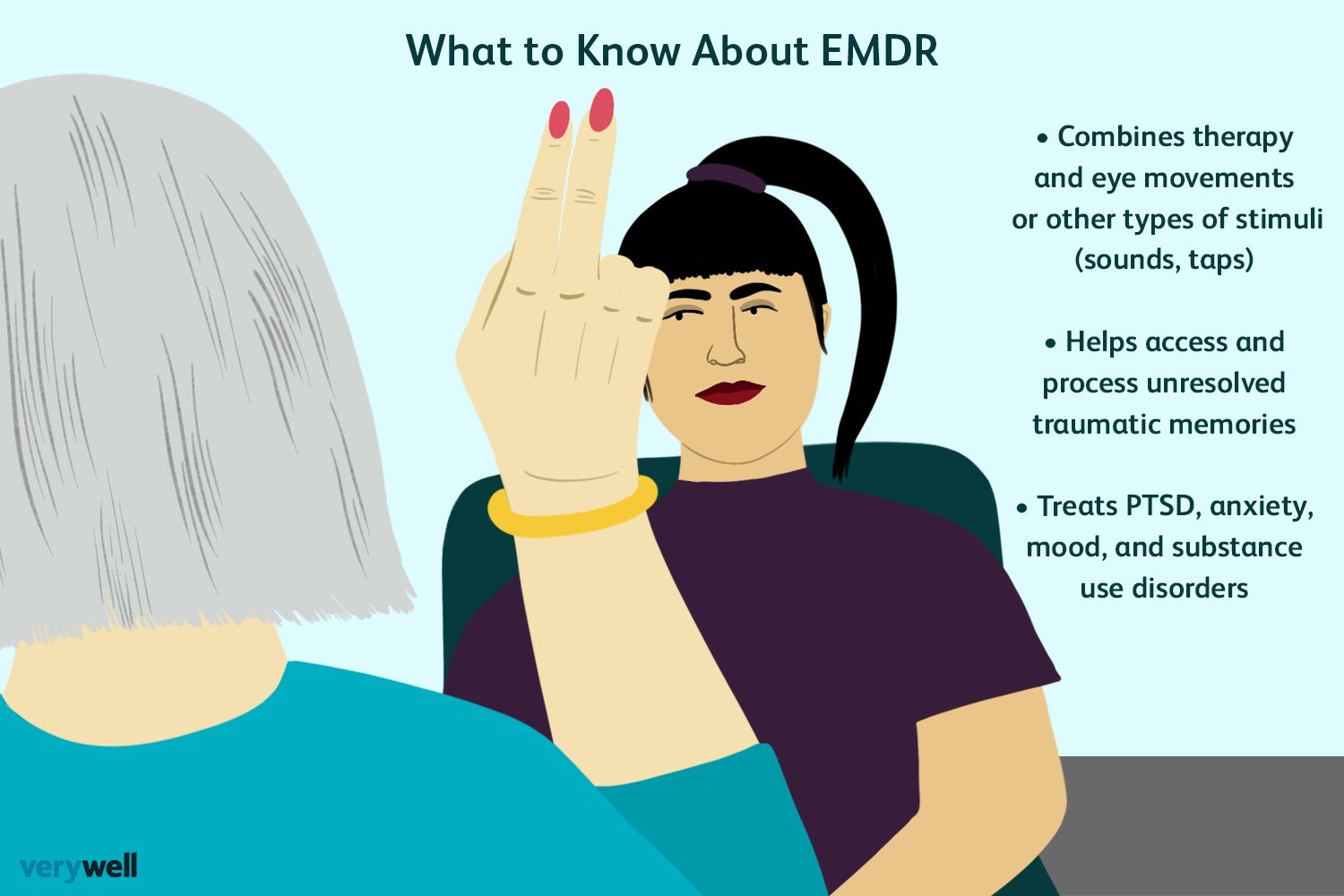Understanding EMDR Therapy: How It Works and Its Benefits

Eye Movement Desensitization and Reprocessing (EMDR) therapy has gained recognition as an effective treatment for trauma and other mental health conditions. Developed by Francine Shapiro in the late 1980s, EMDR has since been used worldwide to help individuals process distressing memories and achieve emotional healing.
What is EMDR Therapy?
EMDR is a structured therapy approach designed to help individuals process traumatic memories and alleviate associated symptoms. It integrates elements of cognitive behavioral therapy (CBT) with bilateral stimulation, which can include eye movements, taps, or sounds. The goal is to help patients reprocess traumatic experiences and reduce their emotional impact.
How Does EMDR Work?
EMDR works on the premise that traumatic experiences can get "stuck" in the brain's memory networks, leading to ongoing distress and dysfunction. Through a series of structured sessions, the therapist guides the client in recalling distressing memories while simultaneously engaging in bilateral stimulation. This dual focus helps the brain reprocess the memories, allowing the individual to integrate them more adaptively.

The bilateral stimulation used in EMDR is thought to facilitate the brain's natural healing processes by promoting the integration of fragmented memories and reducing emotional arousal. This can lead to a reduction in symptoms such as anxiety, flashbacks, and hypervigilance.
The Eight Phases of EMDR Therapy
EMDR therapy typically involves eight phases, each serving a specific purpose in the treatment process. These phases include history-taking, preparation, assessment, desensitization, installation, body scan, closure, and reevaluation. Each phase is crucial for ensuring that the client is adequately prepared and that treatment progresses effectively.
Benefits of EMDR Therapy
EMDR therapy has shown promising results in treating a variety of conditions, including:
-
Post-Traumatic Stress Disorder (PTSD): EMDR is widely recognized as an effective treatment for PTSD, helping individuals reduce the intensity of traumatic memories and associated symptoms.
-
Anxiety Disorders: It has been used to alleviate symptoms of generalized anxiety disorder (GAD), panic disorder, and phobias by addressing underlying traumatic experiences.
-
Depression: EMDR can help individuals process unresolved emotional experiences that contribute to depressive symptoms, leading to improved mood and outlook.
-
Addiction: By addressing underlying trauma, EMDR can complement addiction treatment programs, such as those offered at Peace Valley Recovery, by reducing triggers and promoting emotional stability.
EMDR in Pennsylvania : Accessing Treatment at Peace Valley Recovery
Peace Valley Recovery, located in Pennsylvania, offers comprehensive mental health and addiction treatment services, including EMDR therapy. This facility provides a supportive environment where individuals can undergo EMDR therapy under the guidance of experienced therapists.
At Peace Valley Recovery, EMDR therapy is integrated into personalized treatment plans tailored to each individual's needs. Whether addressing trauma, anxiety, depression, or addiction issues, EMDR is utilized as part of a holistic approach to healing and recovery.

Is EMDR Therapy Right for You?
If you are struggling with symptoms of trauma-related disorders, anxiety, depression, or addiction, EMDR therapy may be a beneficial treatment option. It is particularly effective for individuals who have experienced specific traumatic events or adverse life experiences that continue to affect their daily lives.
Conclusion
EMDR therapy offers hope for individuals seeking relief from the lingering effects of trauma and other mental health challenges. By targeting the underlying mechanisms of distressing memories and emotions, EMDR facilitates healing and promotes emotional resilience. Whether you are in Pennsylvania or elsewhere, facilities like Peace Valley Recovery provide access to this transformative therapy, helping individuals reclaim their lives and move forward with renewed strength and stability.
In conclusion, EMDR therapy stands as a testament to the brain's capacity for healing and adaptation. Its structured approach, combined with bilateral stimulation, offers a pathway to resolution and recovery from trauma and related disorders. As awareness and access to EMDR therapy grow, more individuals can benefit from its therapeutic effects, paving the way for a brighter and more balanced future.
- Industry
- Art
- Causes
- Crafts
- Dance
- Drinks
- Film
- Fitness
- Food
- Spellen
- Gardening
- Health
- Home
- Literature
- Music
- Networking
- Other
- Party
- Religion
- Shopping
- Sports
- Theater
- Wellness
- News


